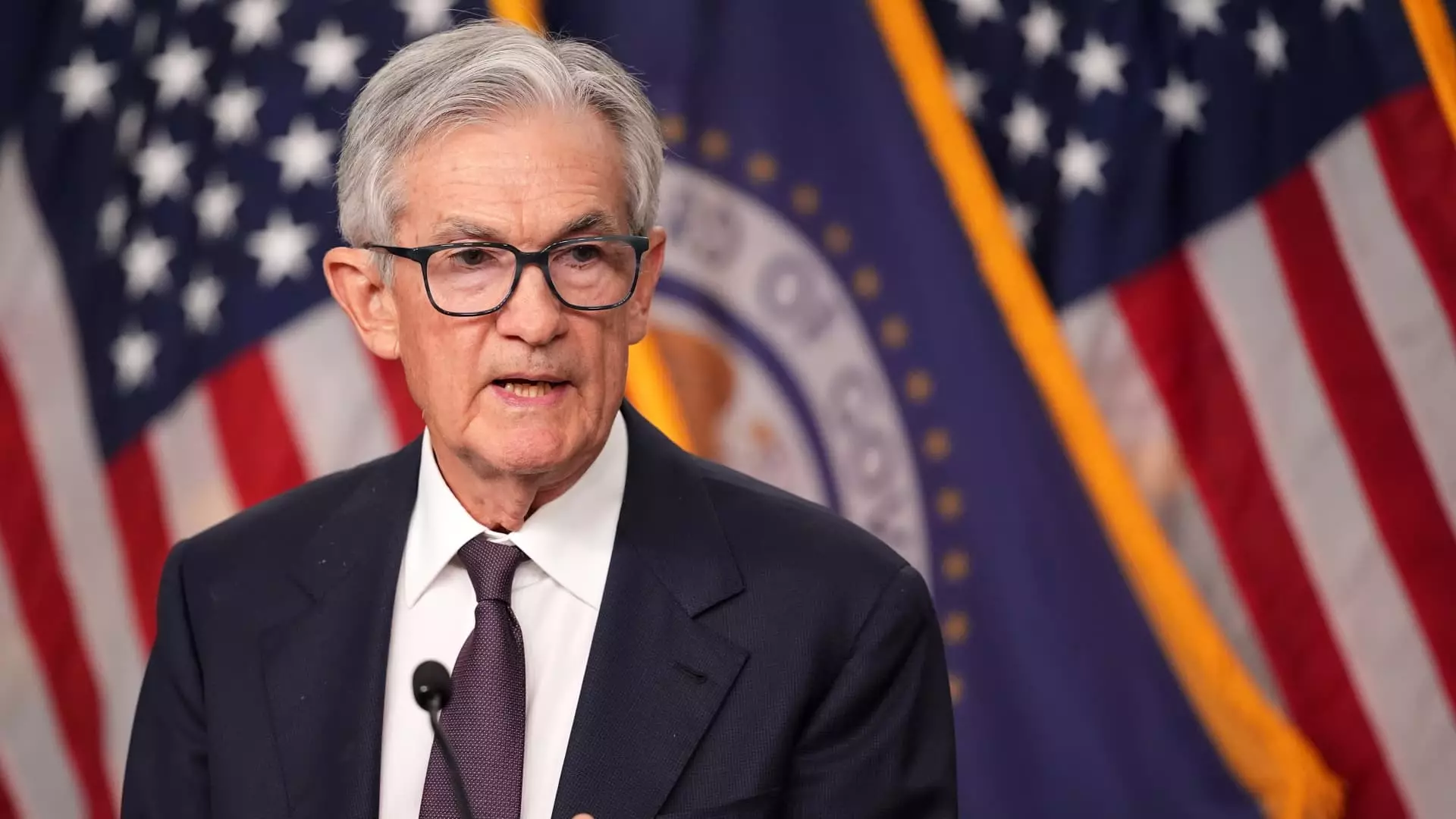In the complex universe of economic policy, few institutions navigate the murky waters with as much scrutiny and pressure as the Federal Reserve. Recent minutes from the Federal Open Market Committee (FOMC) meeting reveal a tension that is palpable: concerns over inflation driven by trade tariffs overshadow the generally positive economic figures of solid growth and a balanced labor market. This juxtaposition is troubling, as it reflects a broader anxiety regarding the interconnectedness of global trade, domestic policy, and economic stability. The Fed’s reluctance to shift interest rates reflects a cautious approach to what many economists fear is an explosive cocktail of economic volatility exacerbated by trade disputes.
Policymakers are caught in a bind, as the very tariffs intended to protect certain industries could backfire, leading to an increase in prices at a time when consumers are already feeling the pinch from rising costs. The apprehension surrounding these trade policies isn’t merely about managing the current economy; it’s about safeguarding future economic stability from a barrage of unexpected external shocks. The Fed’s decision to maintain the federal funds rate between 4.25%-4.5% illustrates their acknowledgment of these risks but also reveals a somewhat cautious or defensive posture that could be misconstrued as indecisiveness.
Trade Turbulence and Economic Pressure
The meeting minutes revealed not just concern among Fed officials regarding persistent inflation but also apprehension that fiscal and trade policy introduces unnecessary complexity into their decision-making process. Participants of the FOMC stressed the need for a clearer economic outlook before embarking on any more aggressive monetary easing measures, indicating that the time for radical financial shifts may have come and gone—for now. This reliance on stability and clarity raises questions: Is the Fed too cautious, or are they adeptly recognizing potential red flags before they become full-blown issues?
Notably, the U.S. market’s reaction to the apparent easing of trade tensions between the U.S. and China serves as a reminder of how quickly investor sentiment can shift in response to policy changes. The brief reprieve sparked optimism on Wall Street, even as bond yields continued to climb—a fascinating yet disconcerting paradox. This dislocation highlights a crucial point; while markets are buoyed by the prospect of easing tariffs, the baseline economic health remains precarious. How can policymakers chart a course that promotes inclusive prosperity amid such unpredictable trade relations?
The Political Dimension
What’s particularly troubling in these discussions is the influence of political pressure on economic policy. President Trump’s vocal demand for rate cuts adds another layer of complexity to an already convoluted situation. While the Fed’s independence is a cornerstone of its ability to function effectively, the threat of political interference remains a looming shadow. Chair Jerome Powell’s affirmation that the Fed won’t bow to political pressure is commendable; however, the reality is that continuous tension between economic objectives and political desires creates a breeding ground for instability. The Fed must remain steadfast in its commitments to its dual mandate of price stability and maximum employment, even as it navigates external pressures that could threaten its integrity and efficacy.
Rethinking Strategy
Moreover, the Fed’s ongoing discourse surrounding “flexible average inflation targeting” poses a critical question: can this strategy thrive in a landscape where inflationary shocks are increasingly unpredictable? The acknowledgment that current measures may lose effectiveness amid substantial economic shifts calls for an innovative approach. The historical precedent set by consistently low interest rates during the post-2008 era is instructive, reminding us that while policy frameworks are essential, they must also retain an adaptability to respond to evolving economic realities.
As the economic landscape continues to shift, the Federal Reserve must recalibrate its strategies and perhaps consider alternative approaches that not only align with current inflationary pressures but also anticipate future challenges. Policymakers cannot afford to become so engulfed in immediate concerns that they lose sight of long-term economic health and stability. Instead, a comprehensive re-evaluation of fiscal and monetary policies is warranted—one that seeks to embrace innovation while still fostering sustainable economic growth.


Leave a Reply